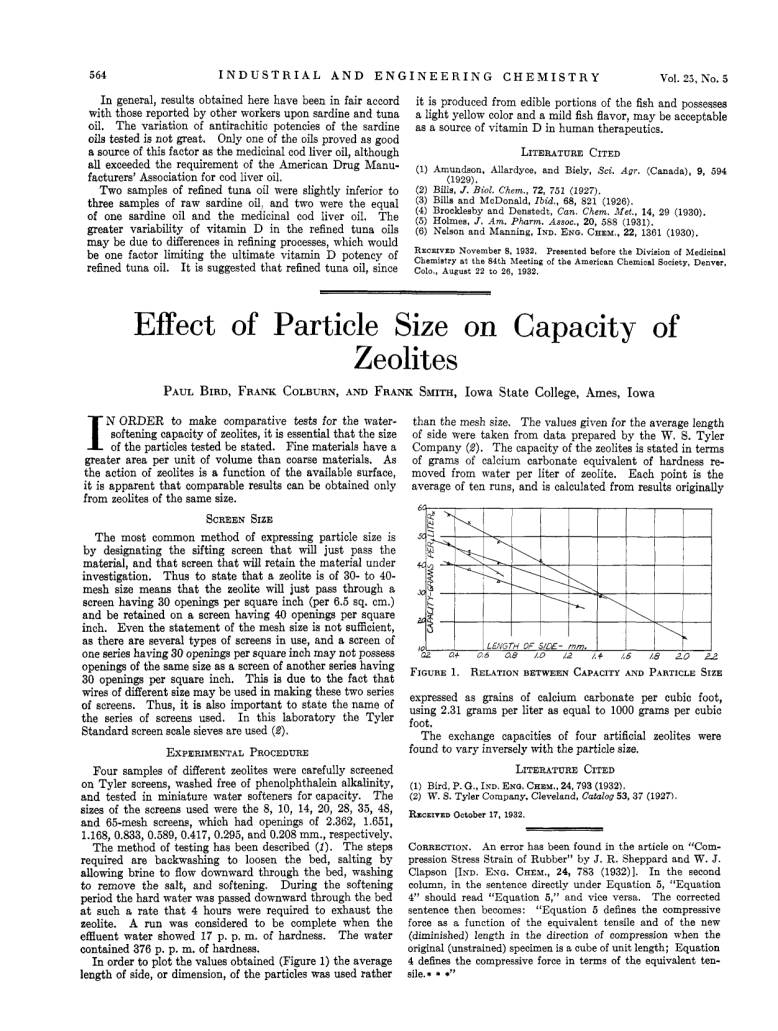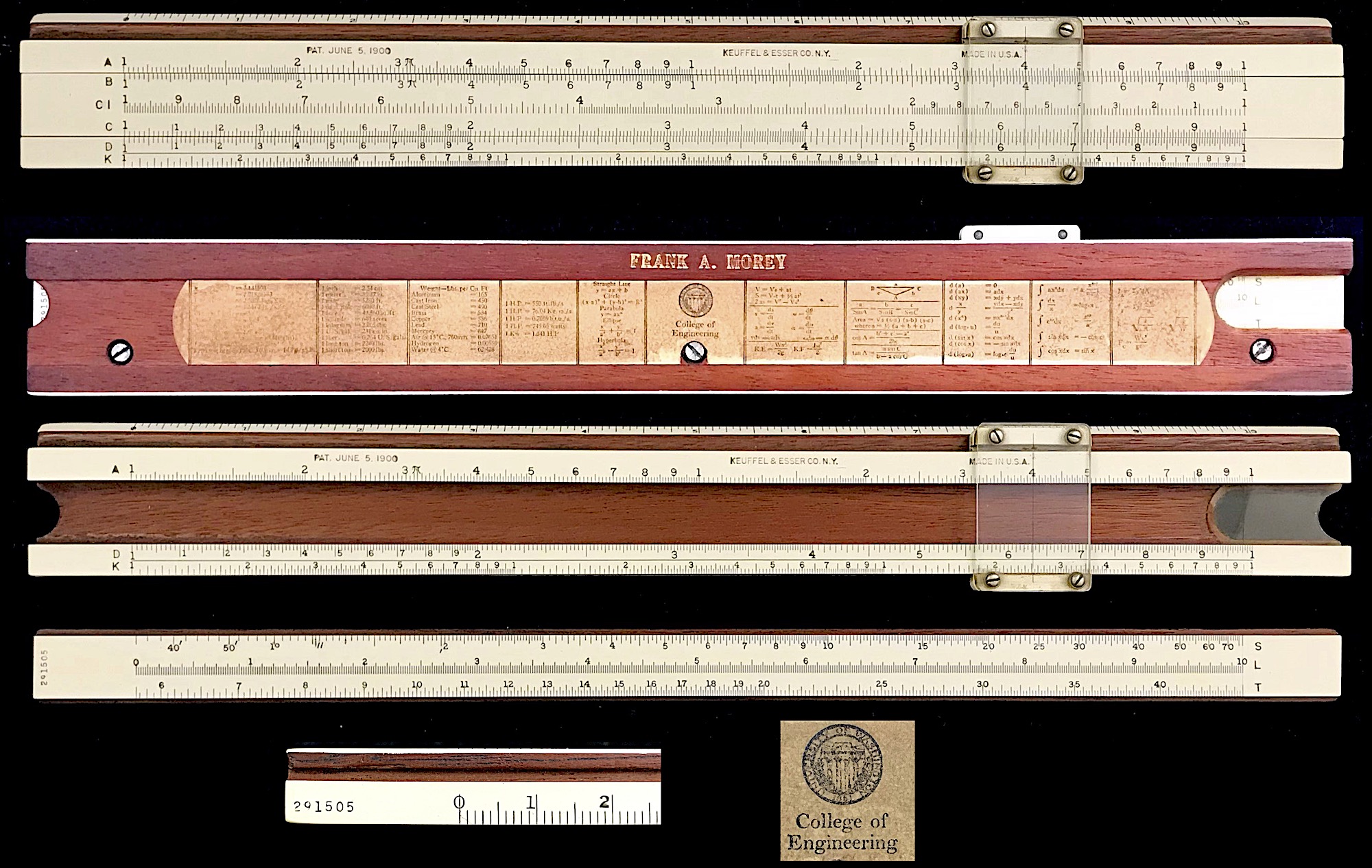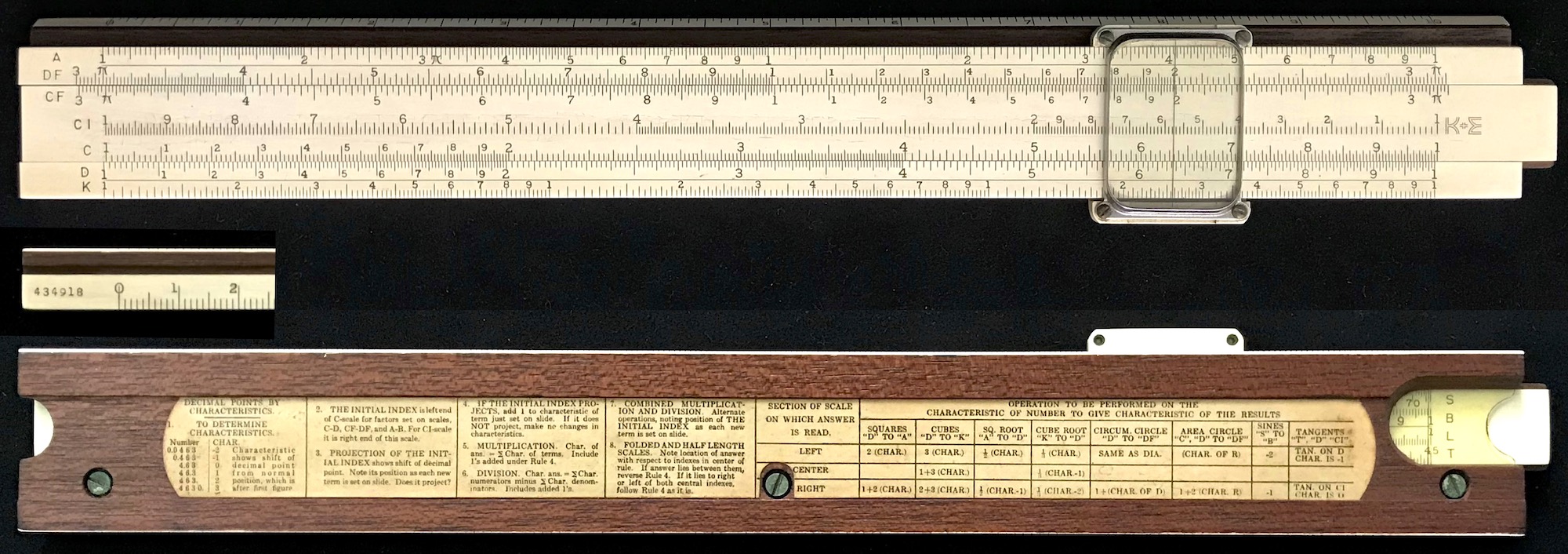8.14 A K+E Rule of Mystery
Originally posted: 2021 Jun 20
An item listed on line as “VTG KEUFFEL & ESSER SLIDE RULE w LEATHER CASE PATENT PENDING INSCRIBED BY OWNER” might seem innocuous, but to a collector it can often raise a flag. It would be much more typical for an item to be listed by its model number, for instance. But in this case, the model number wasn’t listed. As it turns out, this is because this particular K&E slide rule did not have a model number!
The slide rule from Saginaw, Michigan is a 10-inch K&E slide rule with no model number, and is about the same dimensions as a model 4053-3, though the slide extends well beyond the stock. In the location where the model number might be found is the label “K&E CO.” in its place. There is a serial number located on the side of the slide rule, No. 471354. From the McCoy web site the most probable manufacturing dates are 1934 or perhaps about 1950, as serial numbers were re-used periodically. However there are no patent numbers or any other labeling such as the standard “Keuffer and Esser” as would be typical of other K&E slide rules of this era.

This particular slide rule also has instructions on the back, describing how to perform calculations. This, too, is a unique set of information to be found on the back of a K&E rule. And, finally, the scale set of this slide rule was unfamiliar to me when I first saw it. On the front of the rule, 7 scales fill the front face; there is no room for any other information such as patent numbers or the company name. On the front we have:
in /| A DF [ CF CI C ] D K || cm
while on the back of the slide we find:
[ S B L T ]
While many slide rules have the combination [ S L T ] on the back of their slide, the inclusion of the B scale on the back was new and particularly interesting to me.
At this point it was clear to me that I should buy this slide rule, as I certainly did not have it my collection, but also I had never seen anything like it. And so I did. But my investigations did not stop. The first thing to do was to go to the International Slide Rule Museum ( ISRM ) web site and perform a search. Selecting the K&E sub-page and searching for the above scale sets, I found only one example: the K&E Model 4097D, a 5-inch model from 1936. But no 10-inch model like the one I had just purchased.
With another visit to Clark McCoy’s web site I was able to discover a sub-page entitled, Mystery Mannheim Slide Rules. And here, I found that K&E actually created a few slide rules that never ended up in their catalogs and did not have any model numbers. Two examples of the model in question are found on the site and labeled as “Specimen #1” and “Specimen #2”. The McCoy site is one of, if not the most comprehensive compilation of K&E slide rule information, and a search through this site confirms that the model 4097D is the only other K&E slide rule with the same scale set as this “mystery” rule. While not particularly rare, the new item in my collection certainly is not very common. And now, of course, I needed to acquire a model 4097D…
When the slide rule arrived a few days later from across the lake, I promptly contacted the seller to inquire about its history. Here is the reply I received:
“Frank H. Colburn was born in 1908 on a farm in Buena Vista County, Iowa. He attended Buena Vista College and Iowa State College, now ISU. He studied Chemical Engineering and went to work for Shell Oil Company when he graduated. He worked for Shell for 40 years and retired in 1968. He worked on multiple engineering projects in Houston, TX, Plaquemine, LA, Martinez, CA, and Aruba. Since you said this slide rule was manufactured in 1934 or 1950, my guess is it would be the 1934 date for the multiple refinery projects he was involved in.”
The present conjecture by Clark McCoy47 and perhaps others is that this model was very likely a special production slide rule that was sold in university bookstores. If the date of the rule were 1934, then Frank would have been about 26 years old when it was manufactured. After another online search, an article by Frank Colburn was found, which was written while he was at ISU in 1933:
| “Effect of Particle Size on Capacity of Zeolites”, Industrial and Engineering Chemistry, Vol. 25, No. 5, p. 564 (1933). |  |
So, it appears that Frank Colburn was doing (graduate?) studies at Iowa State in this time frame, and perhaps the slide rule was being sold on campus.
The circumstantial evidence suggests that this mystery K&E slide rule is from the early 1930s and that it was perhaps associated with a college campus. While not definitive proof, it continues to support the present theory of the origin of these rules.
And, yes, I soon found that K&E Model 4097D “Ever-There” pocket slide rule with the same scale set to add to my collection; just had to do it. And that’s another story …
Since writing the above, the total number of Mystery K&E Slide Rules has increased which has delivered a few more data points that can be used in trying to solve the “mystery” of these slide rules. For updated information, see the vignette K+E Mystery Rules Update. The present members of this elite group of Mystery Rules found in the Collection are shown below:
| Model | Year | Serial | |
|---|---|---|---|
| Mystery2 | 1929 | 291505 |

|
| Mystery | 1934 | 471354 |

|
| Mystery2 | 1936 | 529600 |

|
| Mystery | 1949 | 434587 |

|
| Mystery | 1949 | 434918 |

|
Private Communication.↩︎